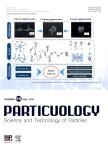Study of poly-disperse aerosols deposition in turbulent flow with different Reynolds numbers
作者机构:School of Mechanical EngineeringShanghai Jiao Tong UniversityShanghai200240China China Nuclear Power Technology Research Institute Co.Ltd.Shenzhen518000China
出 版 物:《Particuology》 (颗粒学报(英文版))
年 卷 期:2024年第89卷第6期
页 面:32-43页
核心收录:
学科分类:07[理学] 0817[工学-化学工程与技术] 070602[理学-大气物理学与大气环境] 0805[工学-材料科学与工程(可授工学、理学学位)] 0706[理学-大气科学]
主 题:Aerosol Turbulent deposition Rebound High Reynolds number
摘 要:The turbulent deposition mechanism is one of the main mechanisms of aerosol deposition in nuclear power plant *** experimental study of poly-disperse aerosol deposition in a horizontal tube is conducted,where the nominal Reynolds number(Re)is in a range of 3600–200,*** aerosol deposition velocity first increases and then decreases with the increase of Res,and at high Re,particle rebound occurs during aerosol deposition in the *** the Re is low,the aerosol deposition velocity increases with the increase of aerosol *** the Re is greater than 60,000,the deposition velocity first increases and then decreases with the increase of aerosol diameter due to particle surface rebound.A new aerosol deposition model has been developed by establishing the energy conservation equation of the rebounded particles in the viscous *** calculated results of the new model are in good agreement with these experimental results,and the error between the aerosol deposition velocity calculated by the model and experimental results is between−60%and 150%.



